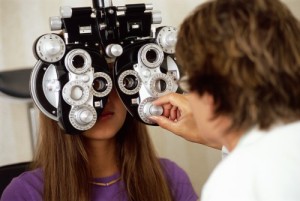![]()
According to MedPage Today, childhood short-sightedness is a common problem that is often picked up during school eye tests, but there are many conditions which can go undetected if a trained ophthalmologist is not consulted.
Recent research conducted by Zalman S Agus, emeritus Professor at the University of Pennsylvania School of Medicine, showed that while standard eye tests are extremely accurate for myopia, long-sightedness cannot be effectively diagnosed with such an investigation.
Reviewing a series of studies, including an Australian paper written by Jody Fay Leone of the University of Sydney Cumberland Campus in Lidcombe, Professor Agus noted that when traditional screening was used for 12-year-olds, the ability to read at least 45 letters detected myopia with a sensitivity of 97.8 per cent.
However, there is no equivalent cut-off point for farsightedness or astigmatism, according to research published in the Archives of Ophthalmology.
Speaking to MedPage Today, David G Hunter, of the Children's Hospital Boston and Harvard, and a clinical correspondent for the American Academy of Ophthalmology, said: "The main reason for screening in that age is to make sure that their vision is not interfering in any way with their ability to perform at their top level in school."
"It's reassuring to know that the standard visual acuity test done in school is going to identify those kids [with myopia] and get them into treatment so they can see the board."
He added that conditions such as astigmatism would be picked up on simply because of a person's poor quality of vision - so the accuracy of standard eye tests in this respect is not critical.
Recently, thousands of primary schools across the country were warned about the importance of good eye health by the Optical Confederation.
By Will Stevenson
Eye Health: Find out if i-GO over night contact lenses will suit you.


